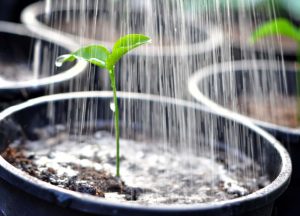
1. Your plant is wilting, but the soil surrounding the plant is damp. The roots take in the food and oxygen for the plant. The roots also take up water, but need air to breathe. Overwatering essentially drowns your plant. If the soil around your plant is constantly wet, there won’t be enough air pockets for your plant to breathe and it will begin to wilt and die.
2. Leaves turn yellow. If your plant stops growing and its leaves start to turn yellow, this is a sign of overwatering. Another clue to overwatering is when you have yellowing leaves and the old leaves as well as new leaves fall at the same accelerated rate.
3. Leaves turn brown and wilt. A plant that is receiving too much or too little water will have brown leaves and wilt. The biggest difference is texture. Too little water will result in brittle leaves and too much water will make the leaves feel soft and limp.
4. Edema. When the roots of the plants absorb more water than they can use, water builds in the cells of the leaves. The cells eventually burst and form blisters. Once the blisters erupt, you will see tan, brown or white warty growths.
Overwatering can be easily corrected. It can be as simple as adjusting your system’s watering times or a little more involved, such as a drainage issue or leak. The sooner you address the overwatering, the better your chances are to save your plants.